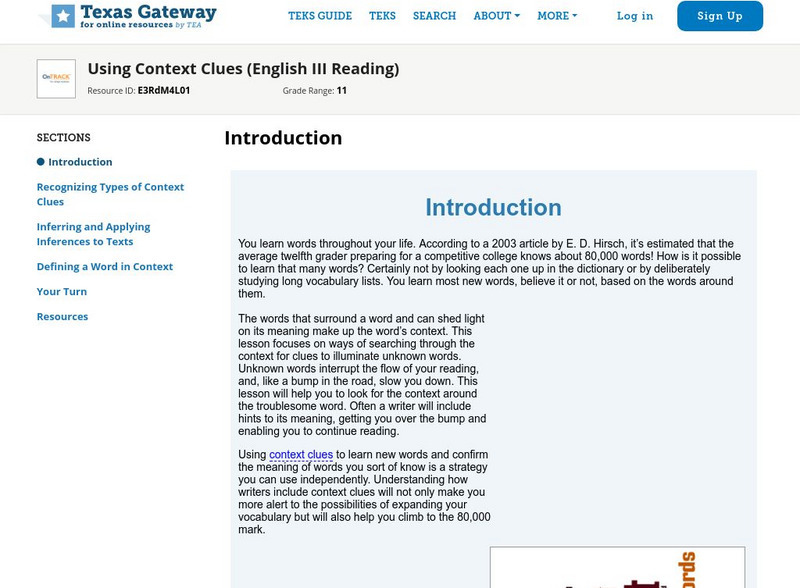Sophia Learning
Sophia: Conflict Types
This slideshow lesson focuses on types of conflict including the 3 main types: internal, external, and relational. It defines internal conflict, gives ways the character could be conflicted, and provides literary examples. It lists the 4...
E Reading Worksheets
E Reading Worksheets: Text Structure: Reading Test 4
In this text structure reading test, students read passages and select the pattern of organization used; they sometimes have to explain their reasons using evidence from the text.
Text Project
Text Project: Fyi for Kids: Vol. 2 Issue 4: Nesting Dolls [Pdf]
This magazine article features nesting or matryoshka dolls. It explains that they are Folk Art which shows what is important to a group of people; it also provides a history of this type of doll dating back to Chinese artists about 1000...
TES Global
Blendspace: Activity 4.3 Humor
A ten-part learning module with links to videos, texts, and images about different types of humor.
Texas Education Agency
Texas Gateway: Using Context Clues (English Iii Reading)
[Accessible by TX Educators. Free Registration/Login Required] This lesson focuses on ways of searching through the context for clues to illuminate unknown words. Unknown words interrupt the flow of your reading, and, like a bump in the...
ReadWriteThink
Read Write Think: Using Picture Books to Teach Plot Development and Confict Res.
Students read picture books to explore the concepts of plot development and conflict resolution. They first learn about the connections between reading and writing, and then revise their own writing. CCSS.ELA-Literacy.CCRA.R.4
Sophia Learning
Sophia: Qualitative and Quantitative Observations: Lesson 1
This lesson will explain the difference between qualitative and quantitative data. It is 1 of 4 in the series titled "Qualitative and Quantitative Observations."





